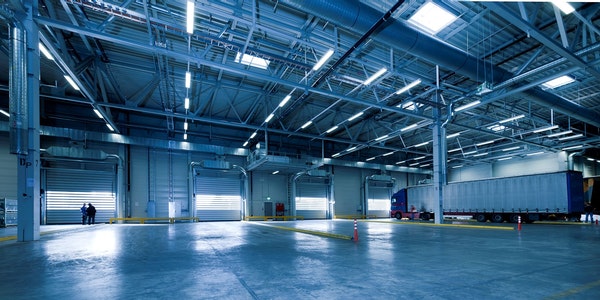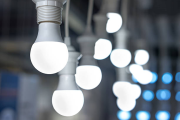The basic elements of lighting design mainly include:
1. Illumination determination:
The illuminance standard of industrial buildings is determined according to the IEC “Lighting Design Standard for Industrial Enterprises” TJ34-79. The illuminance of civil buildings should be selected according to the requirements of use and in accordance with the “Technical Regulations for Electrical Design of Buildings”.
2. High luminous efficiency lamps:
For general lighting in places where lamps are hung high (such as tall factories), high-pressure sodium lamps, self-ballasted high-pressure fluorescent lamps or high-efficiency LED lamps (luminous efficiency greater than 120lm/W) should be used. Except for special circumstances, tube-shaped halogen tungsten lamps and high-power incandescent lamps should not be used.
LED lamps or fluorescent lamps should be used for lighting in places with low lamp suspension (such as offices, residences, and commercial buildings). Except for buildings with special functions (such as museums, theaters, high-end restaurants, etc.), incandescent lamps should not be used.
In places with high light color requirements, three primary color LED lights (that is, RGB light) can be used.
It is recommended to use a quick-start ballast to solve the general fluorescent lamp starting problem in low temperature places (about 1~15 C).
The application range of self-ballasted high-pressure fluorescent lamps and ordinary incandescent lamps greater than 100W should be restricted.
3. Lamps and lighting methods:
It is not advisable to use lamps with an efficiency lower than 0.7. When the lamp is equipped with a shading grid, pay special attention to the influence of the protection angle of the shading grid on reducing the effect of the lamp.
Generally, the efficiency of lamps equipped with grille is not less than 0.55. High-efficiency, high-CRI LED lamps should be used in laboratories and similar rooms.
It adopts a combination of lighting fixtures and furniture.
When the air-conditioning area and lighting capacity are large, the lighting and air-conditioning combination system should be actively adopted to change the operating state of the lighting equipment and reduce the energy loss of the air-conditioning unit.
Where the layout of the room has been determined, local general lighting should be used as much as possible.
Use mixed lighting reasonably.
① It is advisable to use mixed lighting for the following places, that is, lighting places with larger areas, places with higher requirements for visual conditions, and places with lower requirements for uniform illuminance, etc.
For tall workshops, a mixed arrangement of ceiling lights, wall lights, and floodlights should be adopted. When using mixed lighting, the illuminance of the general lighting on the working surface should account for 5-10% of the total illuminance, and not less than 20Ix.
② When a light source cannot meet the requirements of visual work for its color rendering, mixed lighting should be used.
Architectural art lighting design should pay attention to practical results and avoid one-sided pursuit of form.
Strictly limit the setting range of neon lights and festive decoration lights.
Strictly control lighting power indicators, and prefer lighting design schemes with a higher luminous flux utilization factor (LED is the first choice). It is not allowed to reduce the illuminance standard to achieve the goal of energy saving.
4. Improve lighting control methods:
Lighting control should be treated differently according to the different characteristics and requirements of each room. On the premise of ensuring safety, it is as easy to use, manage and maintain as possible, and to create conditions for saving electricity.
For small residential, office or similar rooms, one light control or two light control methods should be adopted. When economic conditions permit, a dimmer switch can be used.
A room with a larger area should adopt the method of multiple lights and one control. When the entire room has a uniform illumination requirement, one can control one every other way. When there is no requirement for uniform illuminance, it can be controlled by zones. At this time, an appropriate number of single-control lights should be considered.
For public passages such as stairwells and corridors in residential and office buildings, the lamps should be controlled by timing switches.
For electrical lighting in areas with insufficient natural light far away from the side windows, an automatic dimming device controlled by photoelectric should be adopted to automatically adjust the intensity of electrical lighting with changes in natural light to ensure the stability of indoor illumination.
Outdoor lighting should be controlled by photoelectric automatic switch or photoelectric timing switch, and the power supply should be automatically turned on or off according to the predetermined illuminance and the predetermined time.
Appropriate control circuits can be used for road lighting. Where conditions permit, dual-bulb lamps that are easy to control can also be used.
The layout of lighting fixtures and circuit design should be easy to manage and maintain, and make it in an efficient working state.
For dual power supply systems, it is advisable to adopt a scheme where two power supplies work at the same time to reduce line losses.
Control and signal equipment:
① Neon lights, light-emitting diodes, energy-saving buttons (with indicator lights), etc. should be used as indicator lights for the control circle.
② When conditions permit, electroluminescence or plasma display devices should be used instead of incandescent lamp light display.
In the discharge circuit of the compensation capacitor cabinet, an automatic switching device can be used to connect the circuit only when discharging.







